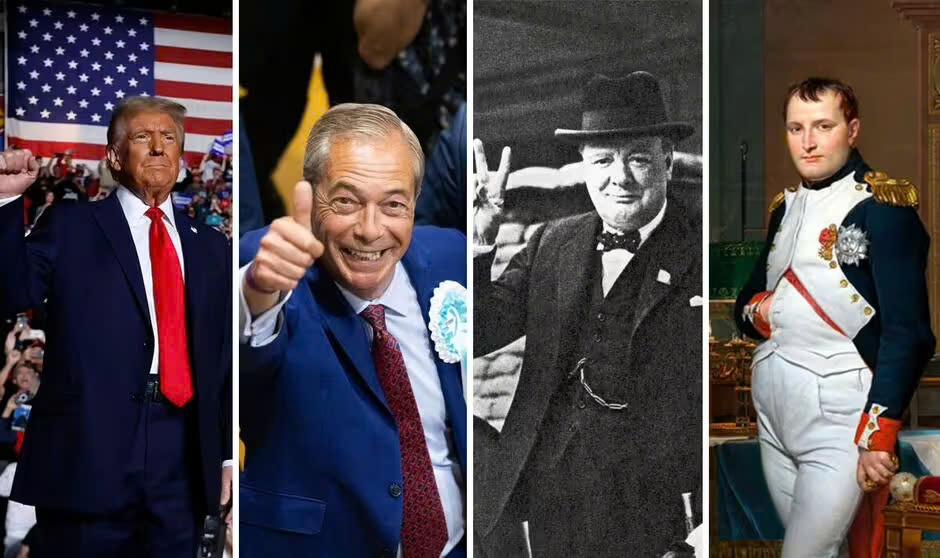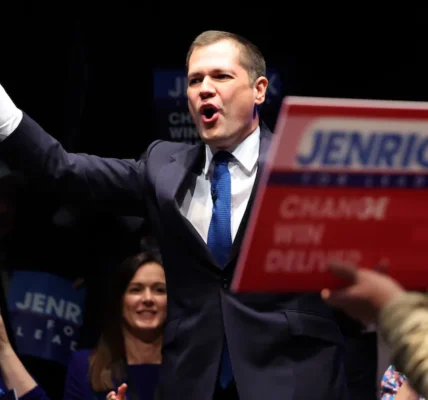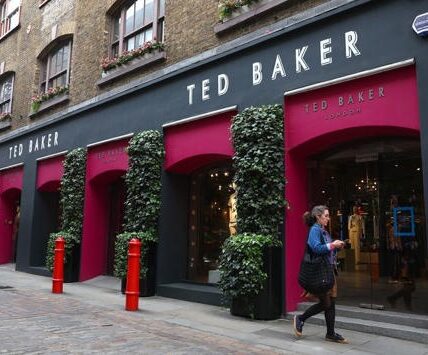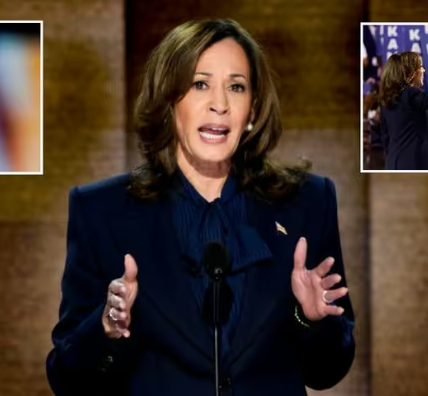After Trump declared victory in the US election, we look back to see who else is competing with the President-elect for ‘greatest political comeback’.

Greatest comeback kings in history (Image: Getty)
Donald Trump is heading back to the White House after an astonishing night of election results that mark one of the greatest political comebacks in history.
The President-elect has already declared victory and is cruising for a sizeable win over Kamala Harris, with almost all of the swing states going his way.
Most remarkably he has outperformed his 2016 result when he faced off against a much more unpopular Democrat candidate Hilary Clinton, putting on large support among Latinos and young black men – while women failed to turn out for Ms Harris in sizeable enough numbers to prevent the red wave.
Already Mr Trump’s victory is being described by many as one of the all-time greatest political comebacks, with Nigel Farage tweeting: “He’s done it again. The most incredible political comeback of our lifetime.”
Israeli Prime Minister Benjamin Netanyahu agreed, congratulating President Trump on “history’s greatest comeback”.
We take a look at some of history’s other great political comebacks, and how they stack up against Mr Trump’s.
READ MORE: Has Keir Starmer wrecked the US-UK ‘Special Relationship’?

Donald Trump’s comeback is historic (Image: Getty)
Nigel Farage
Mr Farage himself is worthy of making this list, having made a number of astonishing comebacks throughout his career.
Having led UKIP to a strong poll showing in 2014, Mr Farage aimed to get a foothold in parliament, pledging to resign as leader if he failed to get elected in South Thanet.
Honouring his pledge to resign, it appeared his political career was over, however he was ordered back by UKIP to lead them again throughout the Brexit referendum, playing a crucial role in securing the vote to leave the EU and fulfilling his political dream.
Standing down again after the result, he came back for a second time in 2019, founding and leading the Brexit Party to a victory in the European Parliament election in a matter of weeks.
The comeback king then came back for a third time in 2024, astonishing Westminster by announcing plans to lead the now-Reform UK, finally securing his long-desired seat in parliament along with four other MPs.
Mr Farage now has his eyes on No10, with Reform support showing no sign of abating.

Mr Farage has made a large number of comebacks (Image: Getty)
Winston Churchill
Winston Churchill, like Nigel Farage, secured more than one astonishing comeback.
Churchill spent 10 years in the so-called “wilderness years” after serving as Chancellor of the Exchequer from 1924 to 1929, however the Tories were turfed out at the election and he began suffering from depression.
Despite the Conservatives’ return to power in 1935, Churchill’s return to the top was far from assured. He differed enormously from Chamberlain’s policy of appeasement, and after Neville Chamberlain resigned as PM in 1940 Tory MPs were much more supportive of Lord Halifax.
After leading Britain to victory in 1945, the British bulldog was unceremoniously turfed out of office by voters, suffering a landslide defeat to Labour’s Clement Attlee.
In another turn of events, however, Sir Winston returned to No10 in the 1951 election, promising to end rationing.
Don’t miss…
Keir Starmer and David Lammy congratulate Donald Trump on US election victory [LATEST]
Nigel Farage hails ‘most incredible political comeback of our lifetime’ [LATEST]
‘Donald Trump’s comeback could bring U-turn of unprecedented proportions’ [LATEST]

Churchill won power again in 1951 after being booted out six years prior (Image: Getty)
Vladimir Lenin
The Russian revolutionary who founded the Soviet Union may have gone on to achieve greatness, but his political career appeared on the brink in 1897 when he was expelled from university for his racial policies and exiled to Siberia for three years.
He spent the next 20 years outside of Russia, living in western Europe where he became a leading figure of the global socialist movement and leader of the Bolshevik faction.
He returned home to Russia in 1917 to begin working against the provisional government that had overthrown the monarchy years earlier.
After leading the October Revolution, he proved victorious and led Soviet Russia from 1917 to his death in 2024.

Lenin was exiled to Siberia before returning to lead Soviet Russia (Image: Getty)
Gover Cleveland
A less well-known name on this list, but the most appropriate comparison to Donald Trump.
Gover Cleveland was the only other US president to serve non-consecutive terms, winning the presidency in 1885, before losing in 1889 and coming back in 1893.
A Democrat, he won the popular vote in all three of his election attempts, but was defeated by Benjamin Harrison in the electoral college in 1888.
Napoleon Bonaparte
The Emperor of the French rose rapidly through the ranks by winning a number of astonishing military victories across Europe.
After crowning himself Emperor of France in 1804 and winning further victories across Prussia and the Holy Roman Empire, Napoleon launched a catastrophic invasion of Russia in 1812 resulting in around 300,000 French deaths and a complete retreat.
After a further defeat by Prussian, Austrian and Russian forces at the Battle of Leipzig, France was invaded and Paris captured, with Napoleon forced to abdicate in April 1814 and exiled to the Mediterranean island of Elba.
However 10 months later Napoleon escaped the island, returning to France with a thousand men to march on Paris and seize control of the country.
Unfortunately for the French giant, his defeat at the Battle of Waterloo in 1815 saw him exiled once again, this time to the more remote island of Saint Helena where he died six years later.

Napoleon returned from exile to re-take France (Image: Getty)
Silvio Berlusconi
The bunga-bunga-loving Italian eccentric served as Prime Minister three times, with a whopping seven-year gap between his first two times in office.
After winning the 1994 election with a pledge of defeating “the communists” and creating one million jobs, he was eventually forced to resign after his coalition partners pulled out.
He then returned to the premiership in 2001, his coalition winning 49.6% of the vote and serving until 2006.
After another defeat at the election, he returned for a third time in 2008, serving a further three years and securing his place in Italian political history.
Peter Mandelson
He may never have secured the top job of British politics, but Lord Mandelson has proved a resilient figure despite a number of sackings by Tony Blair.
The former Hartlepool MP who helped to create New Labour and secured Tony Blair’s 1997 landslide served as Minister without Portfolio and Trade Secretary until 2001, overseeing the Millennium Dome construction before being forced out after taking an interest-free loan from millionaire cabinet colleague Geoffrey Robinson, something he failed to declare.
He was sacked before coming back as Northern Ireland secretary 10 months later, however was forced to resign again in 2001 following accusations he had used his position to help an Indian businessman secure a passport.
He later served as European Commissioner from 2004 to 2008, before being appointed to the House of Lords.
Despite a turbulent relationship with Gordon Brown, Lord Mandelson made an astonishing third comeback as de-facto deputy Prime Minister, Business Secretary, Lord President of the Council and President of the Board of Trade.
He oversaw Labour’s 2010 election campaign, and despite Gordon Brown’s defeat is still active in politics, currently fighting to become the next Chancellor of Oxford University.






